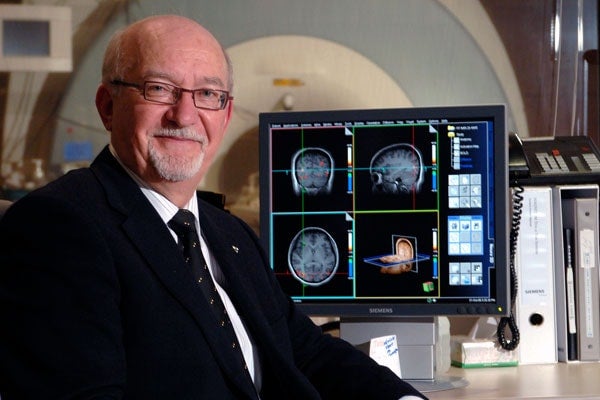
Gold key for University of Toronto's Donald Stuss
Published: October 10, 2014
Professor Donald Stuss has been selected as the recipient of a prestigious award from the American Congress of Rehabilitation Medicine.
The Gold Key Award, granted in recognition of extraordinary service in the field of rehabilitation, is the highest honour given by the ACRM. One of the world’s foremost neuropsychologists, Stuss researches neurology and psychology and has dedicated his work to understanding the human mind through the study of brain-damaged patients. He is the president and scientific director of the Ontario Brain Institute.
“Professor Stuss is a world leader in research in the frontal lobe, which is responsible for cognition, memory, and consciousness,” says Professor Peter Lewis, interim vice-president of research and innovation at U of T. “His leadership at the Ontario Brain Institute continues to be critical in moving research and patient care forward. This is a very well-deserved award.”
Writer Michael Kennedy spoke with Stuss before the October 10th Henry B. Betts Gala in Toronto where he was to receive the award.
Why is research into the brain so important?
The brain drives our intelligence, our feelings, our ability to interact, to walk and talk, remember the good times, plan for the future, and care for ourselves and each other. It is the core of our lives and our world. In Canada, one in three of us will suffer from a brain disorder or injury during the course of our lives. When our brain health is affected by a particular disorder or injury, it affects more than just a physical region of the body. It affects the essence of who we are. We still know relatively little about the brain and there is much to be discovered.
You were appointed President and Scientific Director of the Ontario Brain Institute in 2011. What has been your proudest moment or accomplishment since your appointment?
The proudest moment was the announcement that OBI was renewed for five years, at a substantial increase. That meant that we were able to demonstrate the current and future value of the OBI model to the government in a very short time. This is something I have been trying to do all my life. To integrate science and clinical research in a way that would be transformative, have an impact and cause change.
The OBI focuses its research on five categories of brain disorders: cerebral palsy, depression, epilepsy, neurodegenerative disorders such as Alzheimer’s and Parkinson’s, and neurodevelopmental disorders such as autism and attention deficit disorder. Do you think we will see a cure for any of these diseases in our lifetime?
We believe that the OBI’s integrated approach to neuroscience has the greatest potential to drive cures for brain disorders largely because this provides an opportunity to understand the basic mechanisms underlying disease expression. At the same time, because research is embedded in care, there will be improved treatment, care, and a focus on prevention that will improve patients' lives while the search for cures continues. It is extremely difficult to predict the timing of such a result – but I must say that the integrated, collaborative approach to maximize research excellence across the province brings me increased hope.
How does the OBI select which disorders to research?
OBI aims to establish Ontario as a world leader in brain research, commercialization, and care in order to improve the lives of people living with brain disorders. The selection of disorders is a multi-faceted process. First, there was a call for letters of intent for research focusing on salient brain disorders of relevance to Ontario that would integrate resources, institutions, patients and patient advocacy groups, industry, scientists, and clinicians. Second, a review selected a number of areas of scientific focus and excellence, and these groups were invited to prepare an application.
The applications were externally reviewed for scientific excellence, possible clinical application, and commercialization potential – recommendations were then made to the Board for final selection. Of course, we also had to consider the amount of available funds.
Where do you see the OBI and brain research in 15 years? How will the work the Institute is doing today help people in the future?
We have actually developed a long-term vision, with three distinct phases of development. The current stage focuses on disorders of the brain, since helping such individuals is a priority. The second stage would expand to better understand the “normal” brain through all stages of development. And eventually, the hope would be that research would occur on how best to use knowledge of brain functioning to maximize educational initiatives. That is, the overall thrust will be to maximize the potential of individual brain functioning.
However, each of the “phases” has its own objectives and ultimate goals. For example, in the first phase, improved diagnosis and treatment are priorities but so is the search for a cure.
What’s the biggest challenge faced by brain researchers today?
There are several challenges. Adequate funds, of course, is always at the top of the list. Another important factor is the way we work together. Working the way OBI does, in an integrated way to maximize excellence through sharing, involves organizational and culture shifts which impact participants and their institutions. Management of this is a large challenge.


